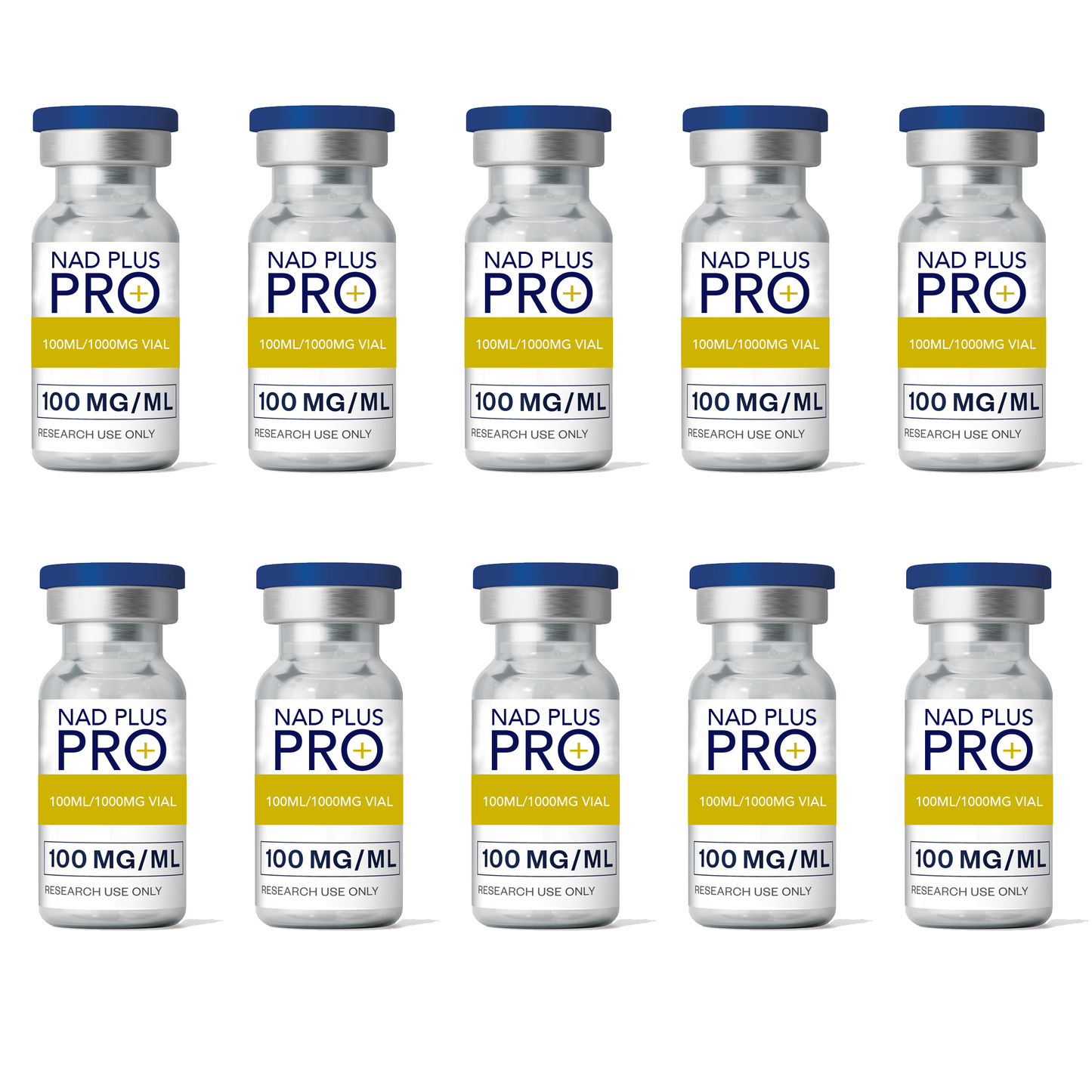NAD+ PRO
NAD+ 250mg x 10 vials
NAD+ 250mg x 10 vials
Couldn't load pickup availability
- 250mg | vial
- Can be stored long term at ambient temperature.
- Sold for research purposes only.
- Contact us for LARGER Wholesale Orders
Type : Sterile Lyophilized NAD+ Powder Vials for Intravenous/Subcutaneous Use
Quantity : 250mg per vial
Vial Size : 2.5 ml
RRP / Treatment : From £450 | From £650 pus
** Please note 1 vial can be split into several treatments for extra profitability. The product is for trained/professional practitioners ONLY. No refund once purchased.
IF YOU ARE SELF INJECTING OUR NAD PLUS PLEASE MIX WITH INCLUDED BACS WATER- ALWAYS STORE IN FRIDGE, EACH VIAL IS MIXED WITH BACS WATER THEN INJECTED INTO STOMACH OR THIGH AS WHEN REQUIRED, EACH VIAL IS A 1000MG SHOT OF NAD PLUS. INJECTOR PENS On out other listing.
3ml-5ml Bacs Water mix for 500mg
7-10ml Bacs Water for 1000mg
Beginners: Use 100-250mg x 2 every week spaced out
Intermediate: Use 500mg x 2 every week spaced out
Advanced: Use 1000mg x 2 every week spaced out (2x500ml one sitting)
NAD+
Nicotinamide adenine dinucleotide (NAD) is a coenzyme central to metabolism.[1] Found in all living cells, NAD is called a dinucleotide because it consists of two nucleotides joined through their phosphate groups. One nucleotide contains an adenine nucleobase and the other, nicotinamide. NAD exists in two forms: an oxidized and reduced form, abbreviated as NAD+ and NADH (H for hydrogen), respectively.
In cellular metabolism, NAD is involved in redox reactions, carrying electrons from one reaction to another, so it is found in two forms: NAD+ is an oxidizing agent, accepting electrons from other molecules and becoming reduced; with H+, this reaction forms NADH, which can be used as a reducing agent to donate electrons. These electron transfer reactions are the main function of NAD. It is also used in other cellular processes, most notably as a substrate of enzymes in adding or removing chemical groups to or from proteins, in posttranslational modifications. Because of the importance of these functions, the enzymes involved in NAD metabolism are targets for drug discovery.
In organisms, NAD can be synthesized from simple building-blocks (de novo) from either tryptophan or aspartic acid, each a case of an amino acid. Alternatively, more complex components of the coenzymes are taken up from nutritive compounds such as niacin; similar compounds are produced by reactions that break down the structure of NAD, providing a salvage pathway that recycles them back into their respective active form.
Some NAD is converted into the coenzyme nicotinamide adenine dinucleotide phosphate (NADP), whose chemistry largely parallels that of NAD, though its predominant role is as a coenzyme in anabolic metabolism.
In the name NAD+, the superscripted plus sign indicates the positive formal chargeon one of its nitrogen atoms.
References
-
Nelson, David L.; Cox, Michael M. (2005). Principles of Biochemistry (4th ed.). New York: W. H. Freeman. ISBN 0-7167-4339-6.
Keywords: NAD+, NADH, Nicotinamide adenine dinucleotide.
Share


